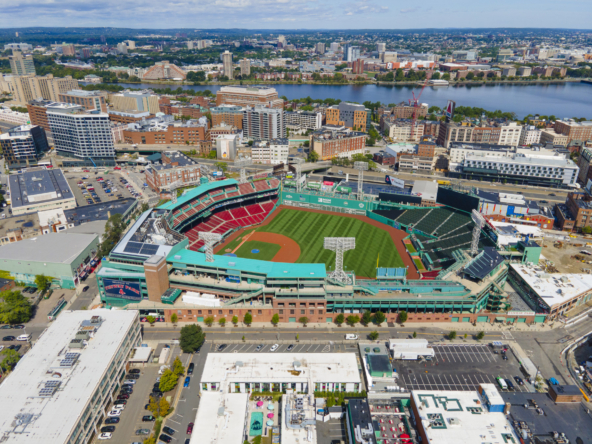Boston’s housing market before the Covid shutdown in March, had been extraordinarily strong with home values rising rapidly year over year since 2008. This is due to a shortage of housing supply and high demand spurred by strong population growth. Driven in large part by an immigration boom and an influx of young professionals, Boston’s population has been growing at a steady pace since 2004. Boston is also a world leader in education and health care and has large thriving and growing industries in finance, technology and biotechnology. Over time, Boston has proven to be a very resilient real estate market, with prices holding up during the 2008 housing-crisis. Please read more herefor Boston market analysis pre-Covid.
Throughout this Covid crisis, however, in Boston we have seen a pause in growth, with a slight decrease in sales and pending sales as well as a slight decrease in price and price per square foot – but only back to 2019 levels (please see Q1 vs Q2 Market stats below). Our economy has reopened and I think pre-Covid prices will come back in ALL of Boston, assuming we do not have another shutdown.According to realtor.com, Boston is #1 City in the U.S.with a 122.52% recovery from the Covid shutdown in March. On Monday, August 24th, The National Association of Realtors said that its index of pending sales rose to 99.6 in May, the highest month-over-month gain in the index since its inception in January 2001. Despite the strong rebound,we are still seeing some softness in certain areas, which I believe creates potentially great buying opportunities to buy on short-term weakness.
There are some key factors keeping the housing markets strong:
·The U.S. housing market is much stronger now vs. 2008
·The Fed’s monetary and fiscal stimulus
·Low Interest Rates continue to support the ability to get a mortgage
·Household debt at historic lows and consumers are in good shape financially
·Millennials are driving the market
What could slow down housing markets:
·Dramatic Rise in Inventory
·Dramatic Rise in Unemployment rate
·Slowdown of International students and Foreign Investment (FDI)
·Dramatic drop in GDP
·Major Companies/Corps/SMBS Going out of Business
Market Stats: Q1 vs Q2 Condo Market Boston
*Please keep in mind the market was shut down for most of Q2.
Q1 Listed Units:2019: 808 vs 689 in Q1 2020
Q2 Listed Units:2019: 1079 vs 1141 in Q2 2020 (July 2020 – 1331)
Q1 Went Pending:2019: 1097 vs 1138 in Q1 2020
Q2 Went Pending:2019: 1704 vs 1190 in Q2 2020 (July 2020 – 456)
Q1 Sold Units:2019: 735 vs 860 in Q1 2020
Q2 Sold Units:2019: 1384 vs 928 in Q2 2020 (July 2020 – 300)
Q1 Sale Price:2019: $802,968 vs $989.995 in Q1 2020
Q2 Sale Price:2019: $1,004,100 vs $813,326 in Q2 2020 (July 2020 – $840,809)
Q1 Avg. Sale Price/Square Foot: 2019: $701.30 vs $784.63 in Q1 2020
Q2 Avg. Sale Price/Square Foot: 2019: $818.26 vs $736.79 in Q2 2020 (July 2020 – $768.76)
There are some key factors keeping the housing markets strong:
Comparing 2020 Covid Economic Crisis vs 2008 Housing Economic Crisis
In Q1 2020, the economy and housing market weretremendouslystrong, with record low unemployment, low delinquencies etc. Moreover, the economy and housing market were coming from a position of strength into this 2020 downturn vs. 2008. This has softened the blow to the market.In 2008, the economic crisiswas set off by an overheated marketdue to irresponsible lending of subprime loans to unqualified buyers, which lead to a housing bubble.The banks bundled the mortgages into securities and sold them to other financial institutions,leading to a major banking liquidity crisis as the poor-quality loans defaulted while the housing bubble burst.In 2020, we do not face the same challenges; our banks and economy are in a much better position to withstand the downturn coming into the Covid Crisis.
Fed’s monetary and fiscal stimulus support the economy and the consumer
The US Government and Central Bank enacted sizeable fiscal and monetary stimulus measures to counteract the economic disruption caused by Covid-19 and these have been very effective. As of May 15th,the Fed provided $2.2 trillion of legislative support. Currently, the Federal Reserve owns almost $1.8 trillion in MBS, over $4 Trillion in Treasuries, and over $1 trillion of other assets, They instituted programs to aid the consumer such as $272 billion in Economic Impact Payments: $1200 individualsor $2,400 for married couples and up to $500 for each qualifying child under a certain income level for 2018/2019 tax payers. And$242 billion in unemployment benefitsso far, according to the Committee for a Responsible Federal Budget (CRFB).
Fed’s Monetary and fiscal stimulus support the secondary mortgage market
At the beginning of the Covid crisis, the MBS industry was hit hard as lending spreads between mortgages and the 10-year treasury yield widened dramatically. The government acted quickly to prop up and facilitate the markets, and spreads quickly came down after spiking in April due to the Fed’s Monetary and Fiscal stimulus.These large-scale purchases helped ensure liquidity and preserved financial stability during the current economic crisis.This included purchasing a minimum of $200 billion of MBS held by government-sponsored enterprises Fannie Mae, Freddie Mac and Ginnie Mae. The Fed’s MBS holdings have increased since the beginning of April. Since mid-March the Fed has bought $719 billion of agency MBS, according to Forbes.
One of the main reasons the MBS spread widened dramatically is due to the dominance of shadow banks, which are funded by private investors.Shadow banks pre-2008 crisis wrote 1 out of 10 mortgages, and now they account for 6.5 out of 10 mortgages according to NAMB (National Association of Mortgage Bankers). The Fed buying of mortgage-backed securities brought down the spread and re-instill confidence for lenders.
Low Interest Rates and ability to get a mortgage
The continuation of the historically low interest rate environment, coupled with banks with healthy balance sheets and the Fed propping up the lending industry, has led to a continued great time to get a mortgage. This is very positive for the market.“Lower mortgage rates stimulate housing demand: new construction, additions and alterations to existing homes and home sales, all part of residential fixed investment. Thus, lower long-term interest rates spur economic growth.” According to Frank Nothaft, chief economist for CoreLogic, a real estate analytics firm.In June, mortgage applications (to purchase a new home) shot up 54.1% from the same month last year, according to the Mortgage Bankers Association Builder Applications Survey.
Household debt at historic lows and consumers are in good shape financially
Leading up to the Great Recession in 2008,banks freely doled out credit for mortgages, auto loans and credit cards and according to Oxford Economics and the Federal Reserve, household debt climbed to a record 134% of gross domestic product. Americans had been saving just 3.6% of their income at the end of 2007. Spending fellabruptlyas Americans worked down the accrued debt. During thecurrent crisis in 2020, household debt is historically low at 96% of GDP. Households are saving nearly 8% of their income. That means they can handle a brief slump and continue spending at a reduced level. Bottom line, consumers are in good shape.
Demographics are driving the market
What is really driving the housing market is Demographics.The Millennial generation is one of the largest generations in history and is about to move into its prime spending years. The Millennial generation ages 15-35 is the biggest in US history with 92m verse 61m for Generation X ages 36-50, and 77m Baby Boomers ages 50 to 70, according to the US Census Bureau from 2015.In 2020, millennials will be buying the bulk of real estate in the U.S., according to Realtor.com’s “2020 Housing Market Predictions.”
Millennials (25-39 years old) represent 31% of population. That’s roughly one out of every three people. Also according to NAMB (National Association of Mortgage Bankers) 45% of all mortgage applications are with millennials. They make up almost half of the purchasing mortgage market. According to Realtor.com, the largest population in the country (those born in 1990) will turn 30 in 2020, and millennials are hitting their peak home buying age.
What could slow down the housing market:
Dramatic Rise In Inventory
We are in the expansionary period and still in the boom years of this real estate cycle. The average duration of housing appreciation and depreciation in a typical housing cycle is approximately five to seven years. We are in the 12th year of this cycle since the market bottomed out in 2008.The market strength and lack of supply may continue to keep pushing prices higher and it is possible that we will enjoy a long period of expansion. However, due to the cyclical nature of the markets, there will be an eventual shift in supply and demand, called hyper supply (over-supply). Dramatic Rise In Inventory – hypersupply (over-supply) will lead to a downturn in the market.Over-supply can be caused by overbuilding, or from a pullback in demand from a shift in the economy. To read more click here. While we have seen a slight pullback from Covid, Boston has an issue with a lack of supply and during Covid we have seen a decrease of supply on the market. We should not see downshift in prices until Supply outweighs demand.
Dramatic Rise in Unemployment rate
A dramatic rise in the unemployment rate could dramatically lower housing demand.It is harder for renters to pay rent if they are unemployed. There is a symbiotic relationship between the tenant, landlord, and the bank. If the tenant is not paying rent, then landlords cannot pay loans. However,the Fed and many state governments have rolled out forbearance and other relief programs to help Americans who have lost their jobs to stay in their homes. These economic stimulus and assistance programs have hopefully greatly helped Americans pay rent and mortgages throughout this crisis.
Major Companies/Corps/SMBS Go out of Business
Companies and corporations going out of business and layoffs/furloughs could have a major negative affected the economy and the housing market. However, the government has tried to soften the blow with stimulus packages and many have been able to weather the storm. However, it’s important to note, small and medium-size businesses (SMBs) account for roughly 48 percent of the US economy and provide employment to about 60 million people in the United States, according to McKinsey. The Government rolled out close to $1T in programs such as PPP and others to help support small –medium businesses.
Slowdown of International students and Foreign Investment (FDI)
International students provide strong annual demand to the housing market in Boston, especially the rental market. International students contributed $44.7 Billion to the U.S. economy in 2018 according to the US Department of Commerce andBoston ranks as the #2 global city for international real estate investment according to AFIRE (A Fellowship for International Real Estate) according to their findings from their 2019 real estate investor survey. Institute of International Education. 71,000+ international studentschoose to study in Boston, a hub for colleges and universities. Currently, international students are not set to return in September and this has led to some pockets of weakness in the city due to rental vacancies. However, this weakness will be short-term since international students will likely return in January or 2021.
Dramatic Fall GDP
Lawrence Yun, the NAR (National Associations of Realtors) Chief economist explains GDP contraction as a result of the Covid lockdown and provides his expert prediction on Q3’s strong recovery and growth:
“As expected, economic activity collapsed in the second quarter to due to the total virus lockdown in April and only partial re-openings in May. The GDP contraction of 33% on an annualized basis is the steepest ever experienced in the U.S. Even with the stimulus and enhanced unemployment benefits, consumer spending collapsed by a massive 35%. Business spending also collapsed by 27%. Even residential investments – comprising of home sales, home building, and remodeling activity – dropped by nearly 40%.
The good news is that this data is backward looking. Third quarter data will show a massive increase. Personal savings rates are the highest ever, with massive deposits at banks. There will be an unleashing of spending in the upcoming months as economies open further. Home sales have already been rising strongly and will continue to do so. GDP growth in the third quarter could be as high as 30%.”
In Conclusion
There is no doubt that Covid has had negative affects on the economy and we will continue to experience more negative effects throughout the rest of the year. We have seen a sharp decline in GDP and a rise in unemployment. However, the economy and housing market have rebounded quickly, greatly benefiting from Federal stimulus. Some pockets of Boston remain soft which I believe create great buying opportunities. Overall, the Boston real estate market is incredibly strong, and, with demand still outweighing supply, our housing market should continue to rebound and appreciate over time. We also have several insulating factors that will facilitate housing prices such as our many world-class hospitals and institutions of higher education. Boston should always be a great market to own real estate.
Jon Kumin
Residential Real Estate Advisor
William Raveis Massachusetts
C. 617.794.4045
jon.kumin@raveis.com




